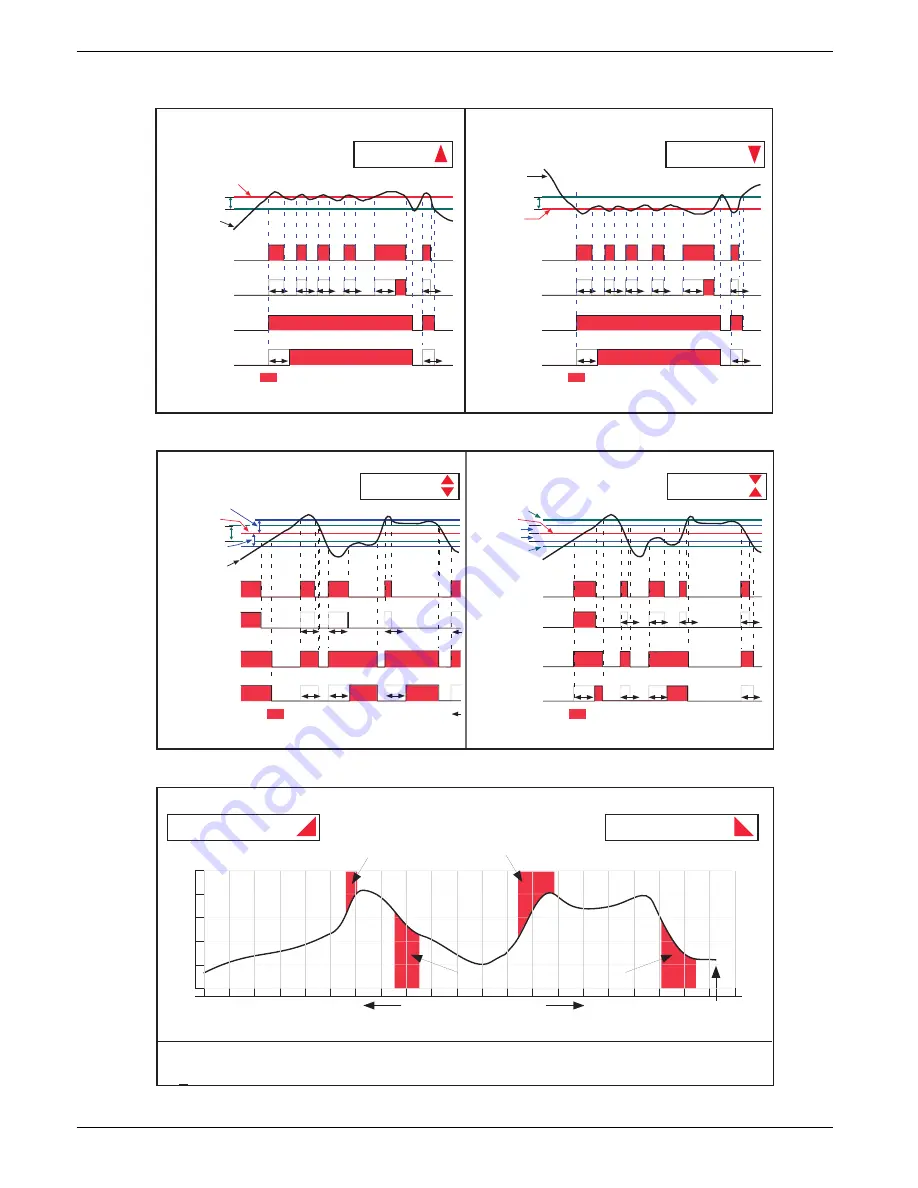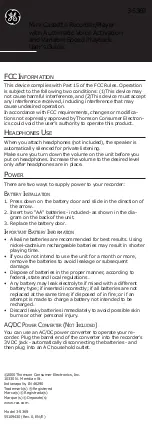
100 MM GRAPHICS RECORDER: USER GUIDE
HA027271
Issue 12 Mar 04
User Guide
Page 56
4.3.3 CHANNEL/ALARM CONFIGURATION (Cont.)
Figure 4.3.3d Absolute alarm definitions
Figure 4.3.3e Deviation alarm definitions
Figure 4.3.3f Rate-of-change alarm definitions
D
D
D
Threshold
Hysteresis
Hysteresis: no
Dwell: 0 secs
D
= alarm active
D is in seconds up to 999999.
Hysteresis is in engineering units
Hysteresis: no
Dwell: D secs
Hysteresis: yes
Dwell: 0 Secs
Hysteresis: yes
Dwell: D Secs
Input signal
Absolute low alarm definitions
Absolute high alarm definitions
D
D
D
Threshold
Hysteresis
Hysteresis: no
Dwell: 0 secs
D
= alarm active
D is in seconds up to 999999.
Hysteresis is in engineering units
Hysteresis: no
Dwell: D secs
Hysteresis: yes
Dwell: 0 Secs
Hysteresis: yes
Dwell: D Secs
Input signal
symbol
symbol
D
D
D
D
D
D
D
D
Reference
Deviation
Hysteresis: no
Dwell: 0 secs
D
= alarm active
D is in seconds up to 999999.
Hysteresis is in engineering units
Hysteresis: no
Dwell: D secs
Hysteresis: yes
Dwell: 0 Secs
Hysteresis: yes
Dwell: D Secs
Input signal
D
D
D
D
Deviation-in alarm definitions
Hysteresis
Deviation-out alarm definitions
symbol
symbol
Reference
Hysteresis
Hysteresis: no
Dwell: 0 secs
= alarm active
D is in seconds up to 999999.
Hysteresis is in engineering units
Hysteresis: no
Dwell: D secs
Hysteresis: yes
Dwell: 0 Secs
Hysteresis: yes
Dwell: D Secs
Input signal
D
D
Deviation
Deviation
Deviation
Hysteresis
D
D
D
D
D
D
D
D
D
Amount
Change time units
Rate-of-change alarm definitions
Rise symbol
Fall symbol
Present
time
A rate-of-change alarm is active if the channel value changes by more than 1 amount unit in less than 1 time
unit. Dwell delays the alarm on time. Averaging removes the effects of spurious 'spikes'.
Rate-of-change rise active
Rate-of-change fall active
Now
Then
















































